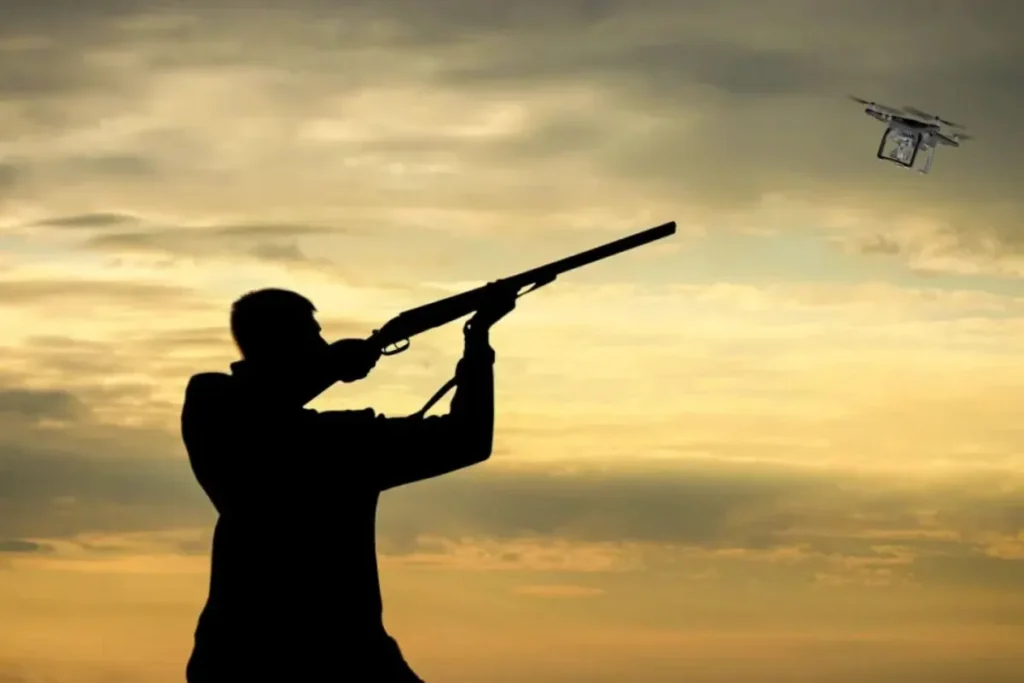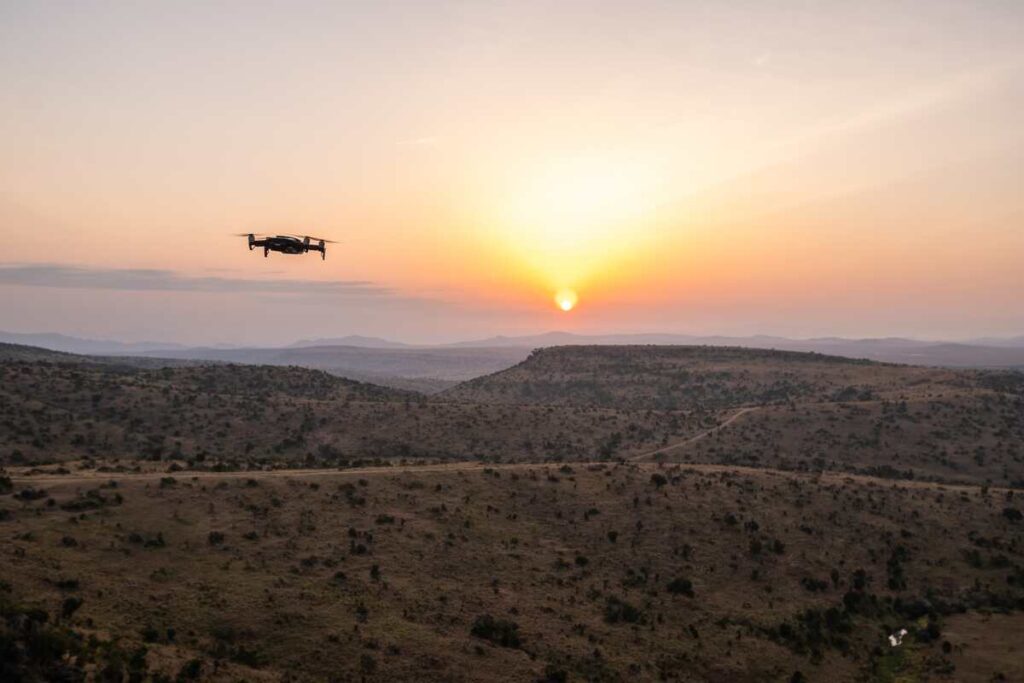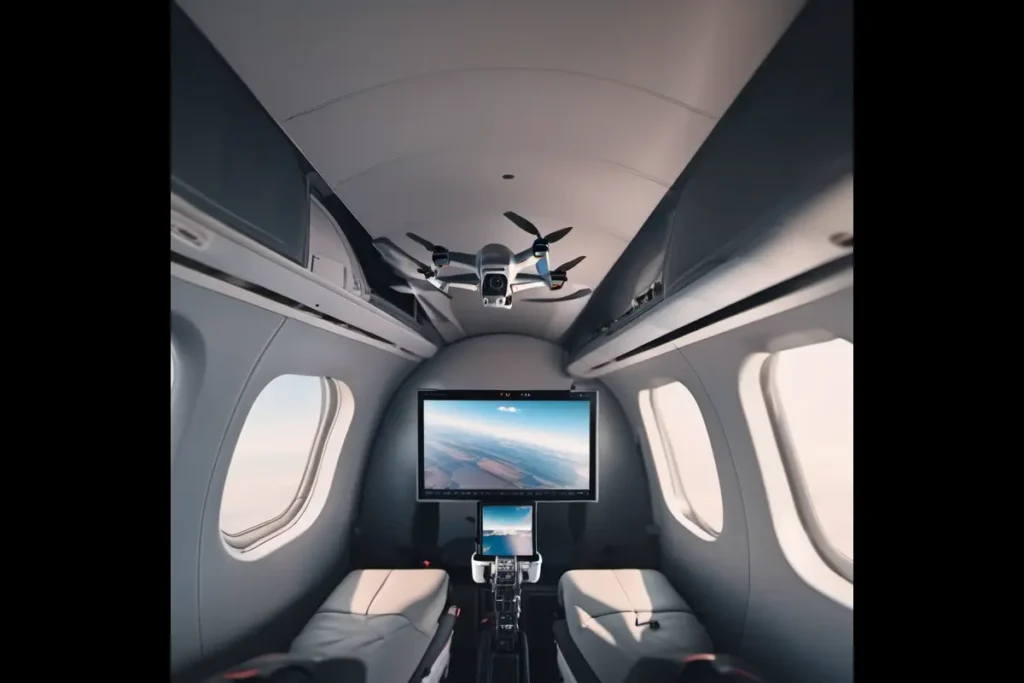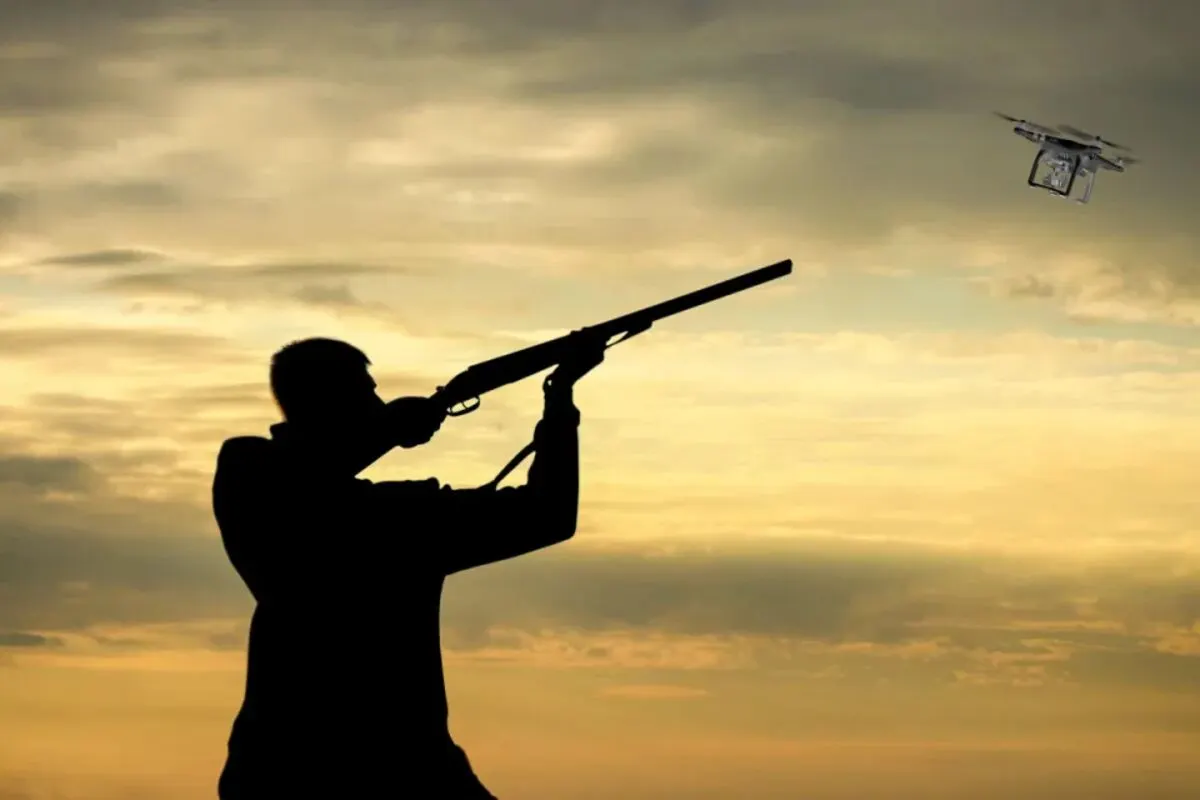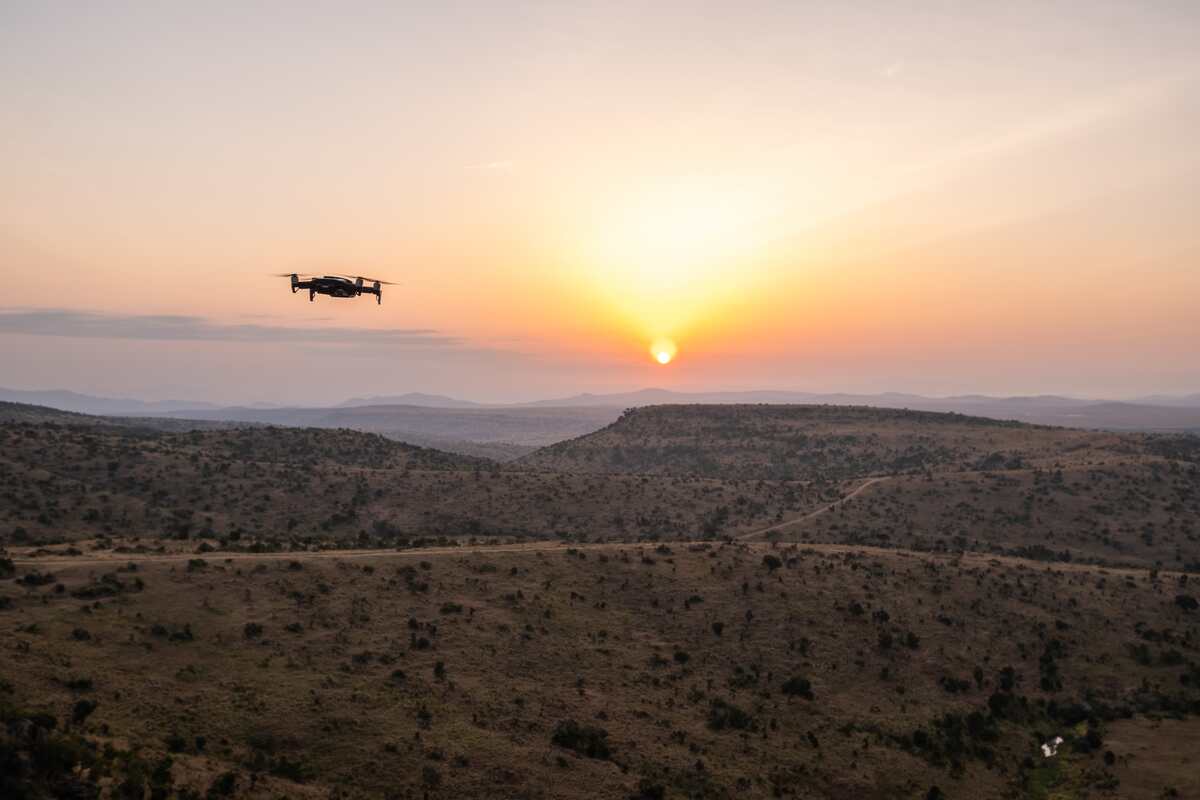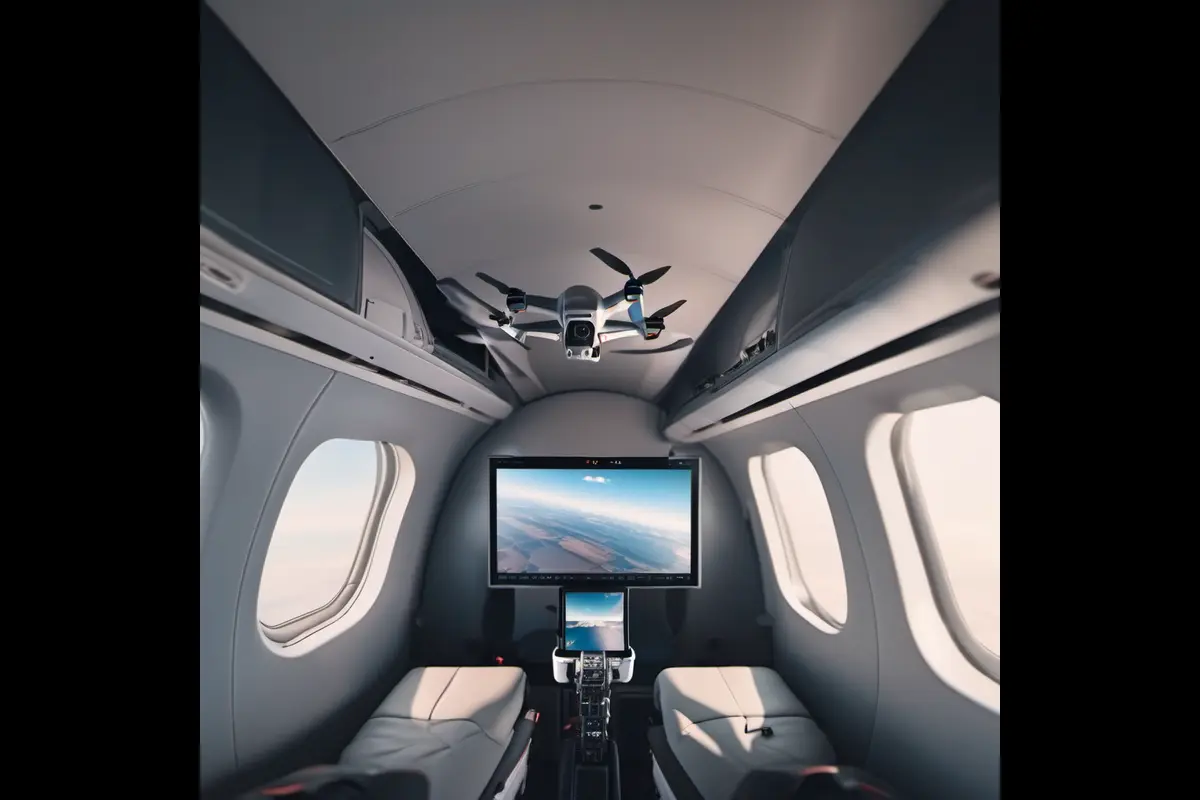How High Can a Drone Fly
Uncover the skies' limits in our guide on 'How High Can a Drone Fly'
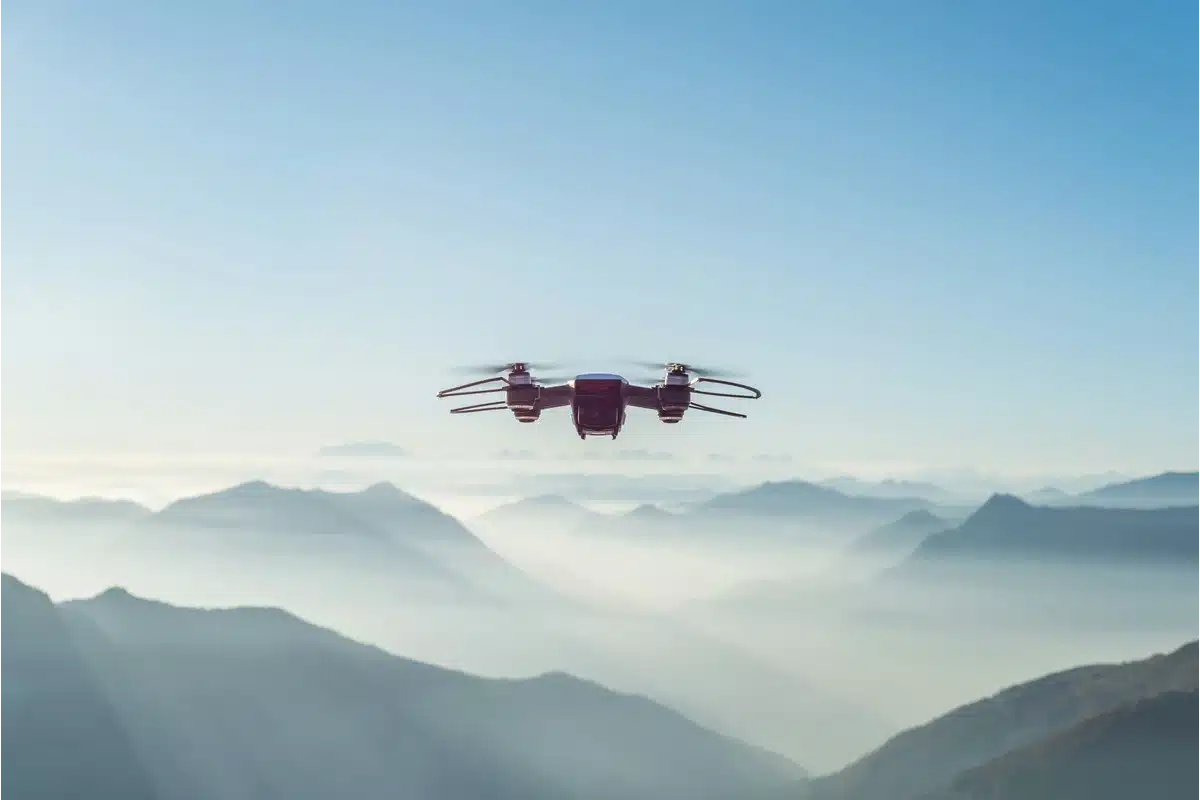
Image Source: Unsplash
Drones have slowly but surely become a constant present in our lives. From our agricultural fields to their use in capturing breathtaking aerial photography, they are everywhere. But as we peer into the vast expanse above us, the question, “How High can Drones fly?” often sparks a blend of curiosity and technical pondering. It is certainly a crucial question that needs to be answered. Without knowing just how high can you fly a drone, you cannot ensure the safe use of your device.
The Need to Know About Drone Altitude Limits
Now, it would not be surprising if many readers are already asking about the necessity of such information. After all, the freedom of piloting a drone seems boundless. Yet, this freedom comes with a responsibility – to fly responsibly. And this comes through with knowing the limits.
Here’s why altitude awareness is paramount:
- Preventing airspace conflicts with manned aircraft, both commercial and private, and ensuring that skies remain safe for everyone.
- Respecting designated airspace, ensuring order and efficiency in the skies
- Flying within limits protects individuals’ privacy on the ground
- Minimizing the risk of drone-related accidents
FAA Regulation on Drone Altitude
Now that we have covered the importance of knowing drone altitude limits, the next step is naturally understanding what these limits are.
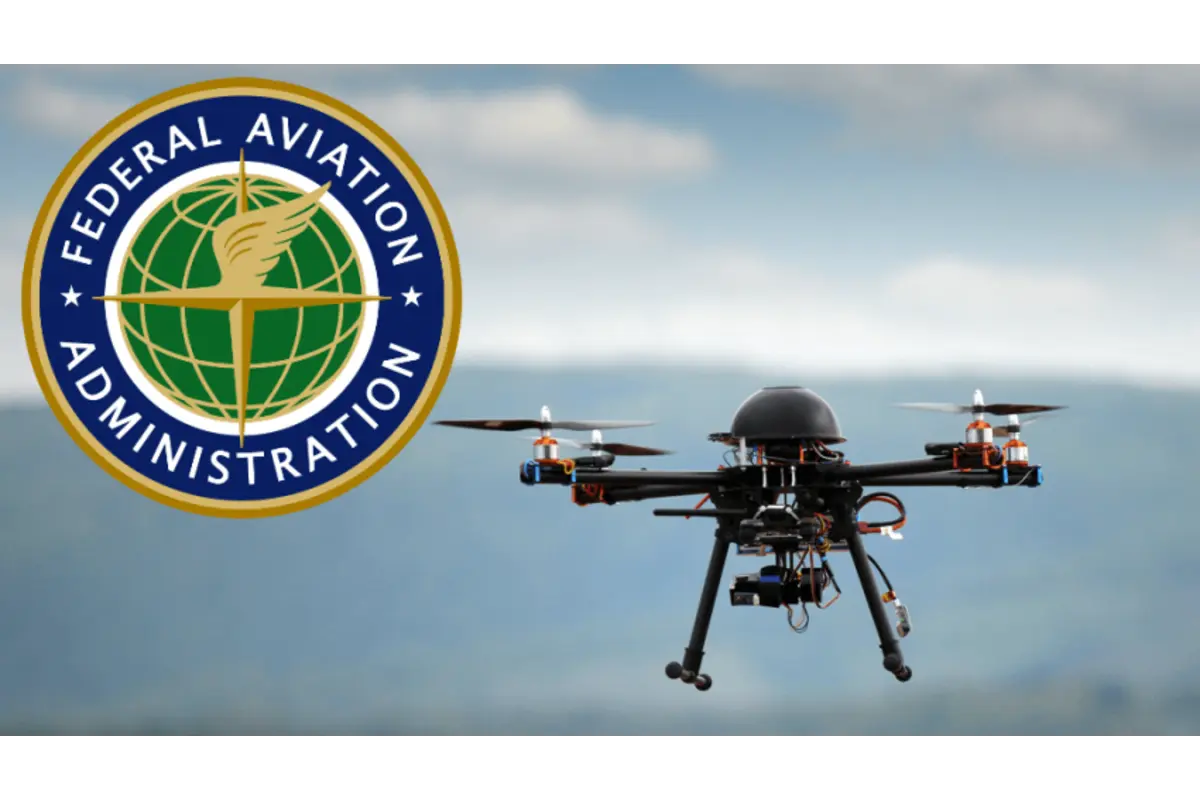
Image Source: Newegg
In the US, there is a strict drone altitude regulation that drone users must adhere to. FAA (Federal Aviation Administration) Part 107 rules cover the rules for both commercial and recreational drone operations.
FAA Part 107 – What does it say?
Rules laid out in the 14 CFR Part 107 clearly underline the use of drones on US soil, under the section titled ‘Operating limitations for small unmanned aircraft.’ Here are the crucial points about the section that you need to familiarize yourself with.
Drones must not exceed 400 feet above ground level (AGL), with two exceptions.
- If the drone remains within a 400-feet radius of a structure.
- The drone’s flight does not extend 400 feet above the highest point of the structure.
The aim of this rule is to strike a balance between operational freedom and controlled airspace management. Note that the 400-foot rule is not absolute, as exceptions are often waived under a COA (Certificate of Waiver or Authorization), but that often happens only for certain research and educational institutions.
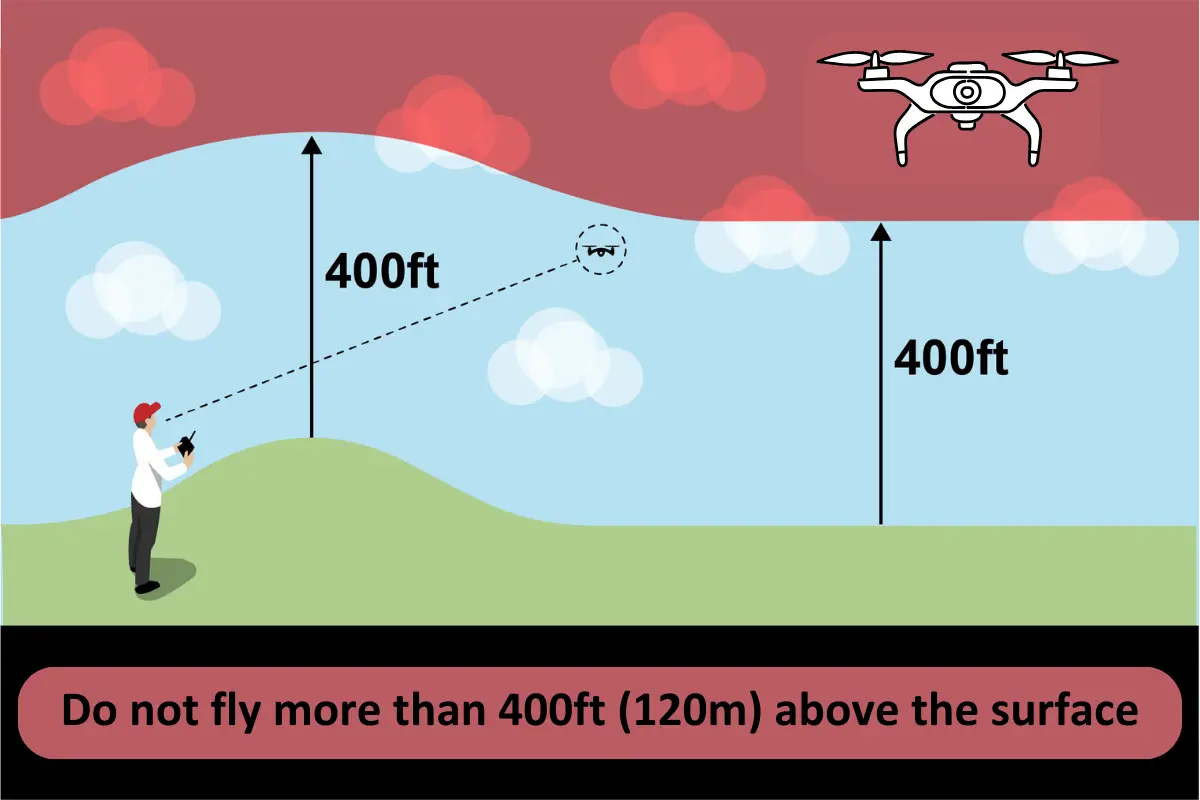
Image Source: Dronescene
It is also worth noting that certain critical areas, such as airports, military bases, and places that come under the designated ‘no-fly zones’ have additional restrictions on drone altitude. These restrictions are in place to address security and operational concerns.
Factors Affecting Drone Altitude
Flying a drone is not just about understanding the machine’s capabilities and legal restrictions that determine how high it can go. Several environmental factors have a significant impact on this, and knowing these factors ensures that you can fly your drone in a safe manner. Here is what you need to keep in mind:
Wind Conditions
- High winds can affect drone stability and control
- Gusts are more unpredictable at higher altitudes
- Weather Patterns
- Poor weather can limit visibility and drone control
- Rain and fog will considerably impact drone altitude
- Surrounding Environment
- Urban areas have air currents that are affected by high-rise buildings and other structures.
- Rural areas are better for drone flying as they may offer fewer obstructions.
- Geographics Differences
- Drone use in urban areas often contends with Radio Frequency interference, privacy concerns, and more stringent local regulations.
- Rural settings, while generally permissive, still require careful consideration of the landscape and potential hazards.
Safety Considerations and Best Practices for Drone-use
Safety should always be the top priority of any drone user. It is recommended that users adhere to the best practices. By doing so, they would not only comply with the regulations but also minimize risks to themselves, their drones, and the public.
But what are these ‘best practices’? Here are some of them:
- You must always keep the drone within your sight
- Avoid flying your drone in conditions that impair visibility, such as dusk, dawn, or foggy weather
- Invest in drones that have an automatic return-to-home feature and built-in collision avoidance technology
- It is always a wise idea to conduct a pre-flight check to ensure all systems are working
- Keep your drone’s firmware up-to-date for optimal safety features and performance
- Be mindful of your drone’s battery life; higher altitudes can deplete charge faster due to increased wind resistance
- Respect privacy when flying drones
Frequently Asked Questions(FAQs)
Flying a drone above 400 feet is not advised as it goes strictly against the FAA guidelines. Doing so could lead to regulatory penalties. Flying above 400 feet also breaches the buffer between drone operation and minimum cruising altitude for manned aircraft, creating an unnecessary safety risk that is better avoided.
No, typical consumer drones do not come with the ability to fly at 60,000 feet, as it is well above the drone’s max altitude. However, that does not mean no drone can do so. Military drones, such as RQ-4 Global Hawk (one of the highest flying drone), are more than capable of flying at such height. Consumer drones lack the necessary propulsion, battery life, etc., to withstand low pressure and extreme pressure found at such altitudes.
For commercial operations, folks can apply for a Part 107 waiver through the FAA’s Drone Zone. Only after approval can they cross the recommended drone max altitude.
Conclusion
If you are on the quest to conquer the skiers, it is crucial first to understand and respect the drone’s max altitude and other limitations. These boundaries are not set to curtail the thrill of piloting the craft but to ensure the safety of all airspace users and the people below. So adhere to safety practices and regulations and fly responsibly!
Why trust Brownspace?
At Brownspace, we write about what matters most to the audience. We do well-researched work to provide in-depth knowledge of drones. Additionally, we interview people using drones to ensure the credibility of the drones used and offer real-life user experience to our readers.

Hi, drone enthusiasts! Born with a natural curiosity for the skies, I developed a love for drones early in life. I began flying drones in 2017 and have since piloted some of the best drones available, such as the Yuneec Typhoon, DJI Mini, Mavic Pro, Hover Camera, and Phantom 3. With passion for drones and expertise gained over the years, I would love to share my knowledge of drones at Brownspace. Stay tuned for an insider’s perspective about drones.


